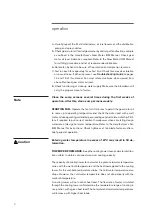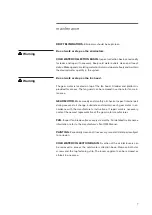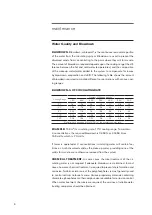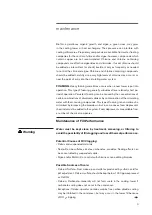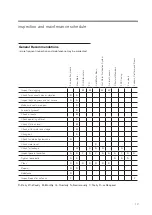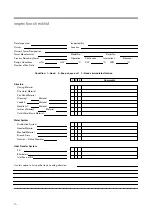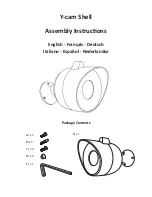
9
Biofilm, a gelatinous organic growth, and algae, a green moss, may grow
in the cooling tower or heat exchangers. Their presence can interfere with
cooling efficiencies. Proprietary compounds are available from water treating
companies for the control of slime and/or algae; however, compounds which
contain copper are not recommended. Chlorine and chlorine containing
compounds are effective algaecides and slimicides. If used, chlorine should
be added as intermittent (or shock) treatment only as frequently as needed
to control the slime and algae. Chlorine and chlorine containing compounds
should be added carefully since very high levels of chlorine may occur at or
near the point of entry into the circulating water system.
FOAMING–Heavy foaming sometimes occurs when a new tower is put into
operation. This type of foaming generally subsides after a relatively short pe-
riod of operation. Persistent foaming can be caused by the concentrations of
certain combinations of dissolved solids or by contamination of the circulating
water with foam-causing compounds. This type of foaming can sometimes be
minimized by increasing the blowdown, but in some cases foam depressant
chemicals must be added to the system. Foam depressants are available from
a number of chemical companies.
Maintenance of Fill Performance
Water must be kept clean by treatment, screening, or filtering to
avoid the possibility of fill clogging and loss of thermal performance.
Potential Causes of Fill Clogging:
• Debris and suspended materials.
• Scale—Can be sulfates, silicates, carbonates, or oxides. Scaling effects can
be accentuated by suspended solids.
• Algae and/or Biofilm—Can control with chlorine or non-oxidizing biocides.
Possible Sources of Scale:
• Calcium Sulfate—From make-up and sulfates produced by sulfuric acid for
pH adjustment. Calcium sulfate should be kept below 1000 ppm expressed
as CaCO
3
.
• Calcium Carbonate—Generally will not form scale in the cooling tower if
carbonate scaling does not occur in the condenser.
• Exceptions: If make-up water contains surplus free carbon dioxide, scaling
may be inhibited in the condenser, but may occur in the tower fill because
of CO
2
stripping.
Warning
maintenance
➠




